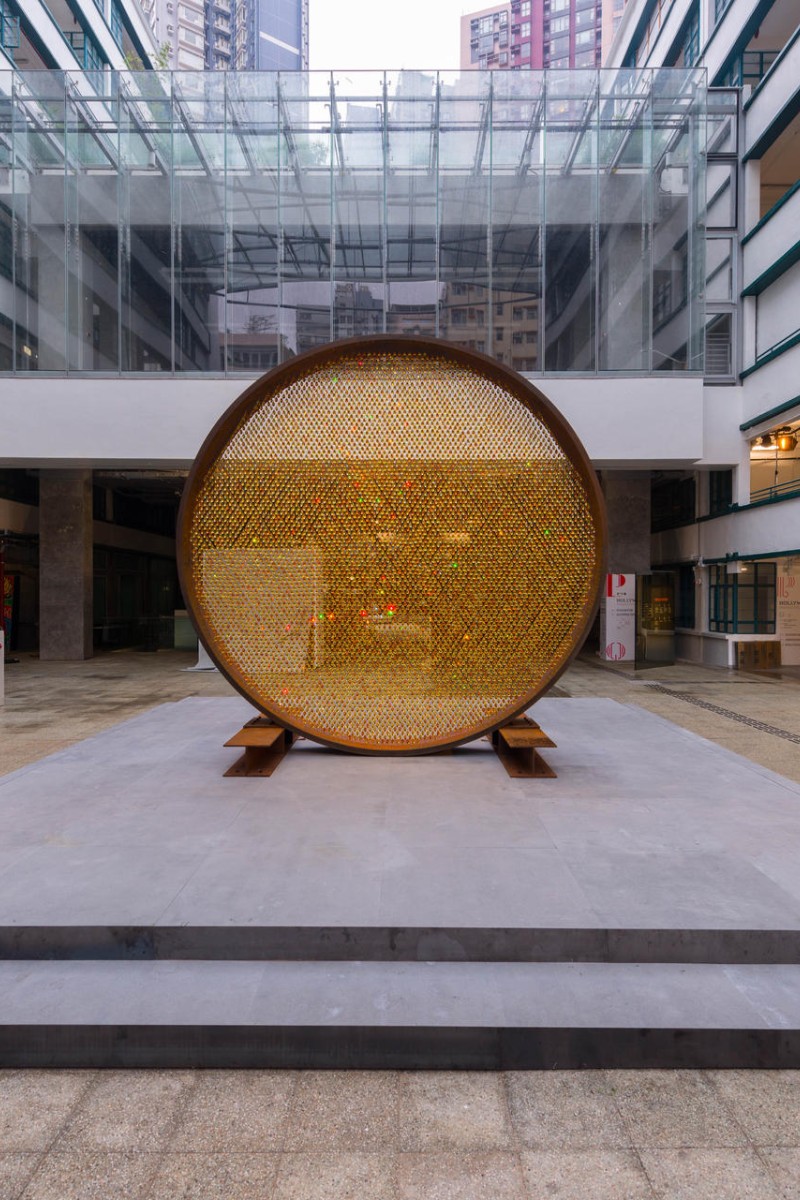
The power of design is crystal clear
After their latest exhibit shone brightly last month, two designers spoke to two YP junior reporters about how creativity and a never-give-up attitude are essential to make it in the world of art
 Some 8,000 crystals make Prologue look like the sun. Once the actual sun goes down, the piece looks like a starry sky, or the moon.
Some 8,000 crystals make Prologue look like the sun. Once the actual sun goes down, the piece looks like a starry sky, or the moon.Meet the designers
"We refine the definition of furniture."
That was how Ian Stallard introduced the Fossil Collection, a furniture design project made alongside luxury brand Swarovski.
Furniture designers Stallard and Patrik Fredrikson met each other at the Central Saint Martins College of Arts and Design in London, Britain. They started working together in 1995.
The pair established Fredrikson Stallard, a furniture design studio, in 2003. In 2006, they joined David Gill Galleries in London, a gallery known for displaying famous designers' work.
For the duo, design is about the communication between their work and the audience.
They believe there are no boundaries when it comes to design. They will use anything from foam to aluminium to create items such as candles and tables. They use every opportunity to translate their creativity into new work.
Not that it is always easy. "It is really hard to stick fabric onto foam," said Fredrikson, who had to tackle this problem when designing the Pyrenees sofa, which is now displayed in London's Victoria and Albert Museum.
The sofa is just one of the unconventional, adventurous ideas that have highlighted the designers' careers.
They are leading figures in British "avant-garde" design. This is the type of design that may seem weird at first because it tries to be different.
Their success has led them to work with a series of famous brands, and also win lots of awards, such as a Red Dot Design Award and the Arts Foundation Furniture Design Fellowship.
Stallard and Fredrikson said young designers must never give up if they want to reach their goal. It is important to stand by your beliefs, however hard that may seem. Chasing money will not lead to success.
"Just keep trying and trying," said Fredrikson. "And one day, you will be the one."
Christy Leung
A symbol of life
Fredrikson Stallard had worked with Swarovski before creating their current piece, Prologue. Swarovski is famous for creating fabulous, sparkling crystals. But the designers wanted to use these crystals for something bigger.
Pandora, which they created in 2007, was a modern take on classic chandeliers. It was made from more than 1,990 Swarovski crystals, which were connected to wires and a computer system, allowing them to move.
At one moment, it would look like an ordinary chandelier, but the next it would "explode" before your eyes. It was a way of using art to explore crystals and technology.
Stallard and Fredrikson also experimented with using crystals in strange situations. One of their projects, Cavern Furniture, was very unconventional. Dark-coloured diamond crystals were added to furniture sets. It was not as glamorous as Pandora, but it was a way of using crystals in a more low-profile manner.
Last month, Fredrikson Stallard showed off its latest work, Prologue, at PMQ, the former police married quarters in Central which recently opened as an art, shopping and food venue.
Prologue is described as a symbol of "life and rebirth". It comprised more than 8,000 orange-coloured crystals in a round circle. Instead of using traditional concrete, the round frame is made of rusty steel. The design is meant to represent the sun, which is a natural subject for artworks made from this substance.
"Works on crystals are all about movement and light," said Stallard.
The courtyard at PMQ provided an open space full of natural sunlight. The colours of the crystals were different strengths, and they all refracted and reflected light in all directions.
At night, artificial lights shone on the crystals, transforming it into something which looked like the moon.
Finding such a magical piece of art in between two old buildings brightened up the whole area, and your mood. And best of all, it was easily accessible for residents and visitors to drop by and take a look.
Areon Chan